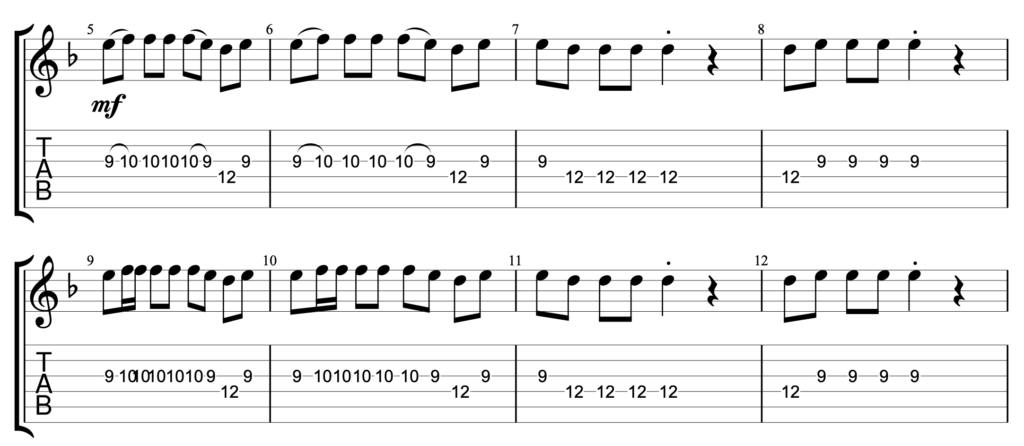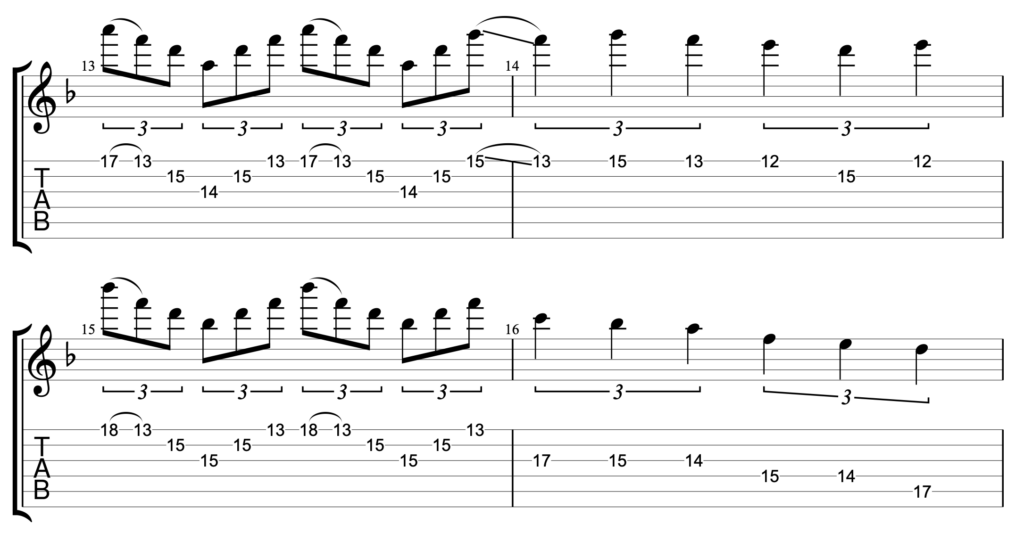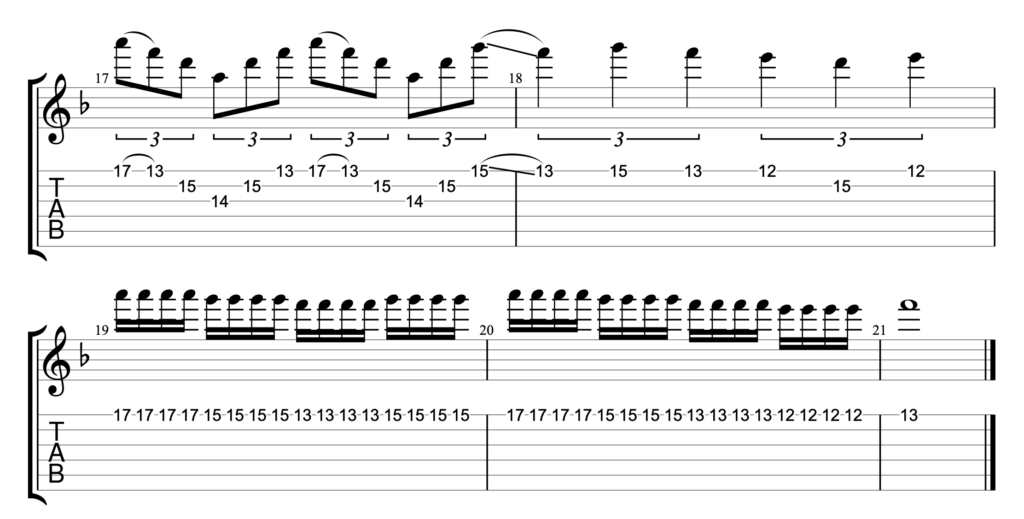Dieser Artikel ist Teil der Serie “Level Up! – 42 Gitarrensoli für ein besseres Sexleben”
Auch bei diesem Solo gibt es eine zweite Lead-Stimme.
Takte 1 und 2
Die erste Triole bzw. die getappten Töne sind in Quarten (D-G, E-A, A-D) harmonisiert, danach folgen diatonische Terzen (C-E, H-D, A-C)
Takte 3 und 4
Auch hier geht es mit Terzen weiter, wobei wir darauf achten müssen, dass wir in Takt 3 A Dorisch (A-H-C-D-E-Fis-G)
und in Takt 4 A natürlich Moll (A-H-C-D-E-F-G) haben
Takte 7 und 8
Das Abschluss-Arpeggio der zweiten Stimme ist in diesem Fall auch eine Terz höher und ist folglich ein Em7-Arpeggio (E-G-H-D).
Full Track
GuitarPro
Download GuitarPro Datei Red Carpet Girl
Ihr habt noch kein GuitarPro?
Ich würde mich freuen, wenn ihr es über den Amazon oder Thomann-Affiliate-Link kaufen würdet:
Guitar pro Version 8 (Amazon Affiliate)
Guitar Pro Version 8 (Thomann Affiliate)











